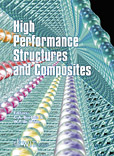Optimum Design Of Submarine Hulls
Price
Free (open access)
Transaction
Volume
59
Pages
8
Published
2002
Size
327 kb
Paper DOI
10.2495/HPS020461
Copyright
WIT Press
Author(s)
Basem Alzahabi
Abstract
Vibration characteristics of high performance structure such as submarines are very critical. Submarine hulls are mainly constructed of cylindrical shells. Cylindrical shells are also used in many structural designs, such as offshore structures, liquid storage tanks, and airplane hulls. The vibration characteristics of cylindrical shells present many unique challenges in optimum design of submarine hulls for vibration control. In cylindrical shells, the lowest natural frequency does not necessarily correspond to the lowest wave index. In fact, the natural frequencies do not fall in ascending order of the wave index either. Eigen solutions of cylindrical shells also indicate repeated natural frequencies. These are referred to as double peak frequencies. Mode shapes associated with each natural frequency are combination of (i) Radial (flexural); (ii) Longitudinal (axial): and (iii) Circumferential (torsional) modes. In this paper, uniqueness of modal spectrum, redundancy of modal constraints and non-uniqueness in optimum design of cylindrical shells for vibration requirements are presented. The implications of these characteristics on submarine design are highlighted. Related issues such as the new mode sequence, mode crossing, repeated natural frequencies and stationary modes are also discussed.
Keywords





